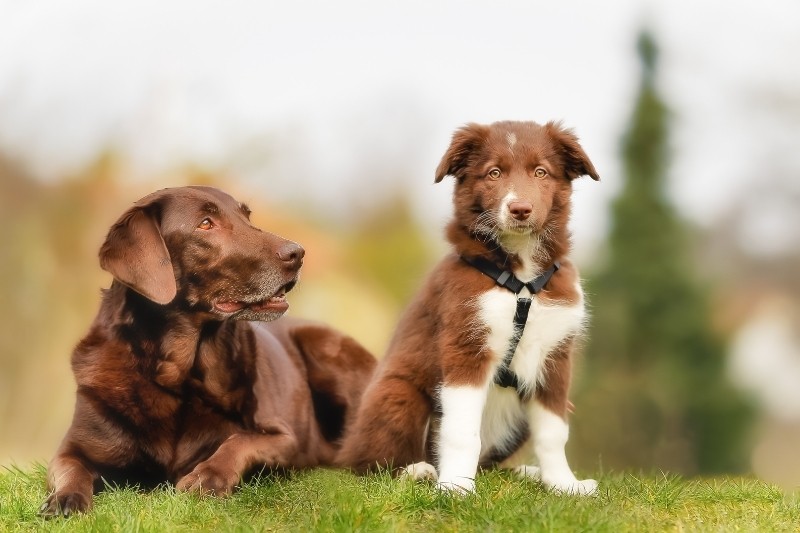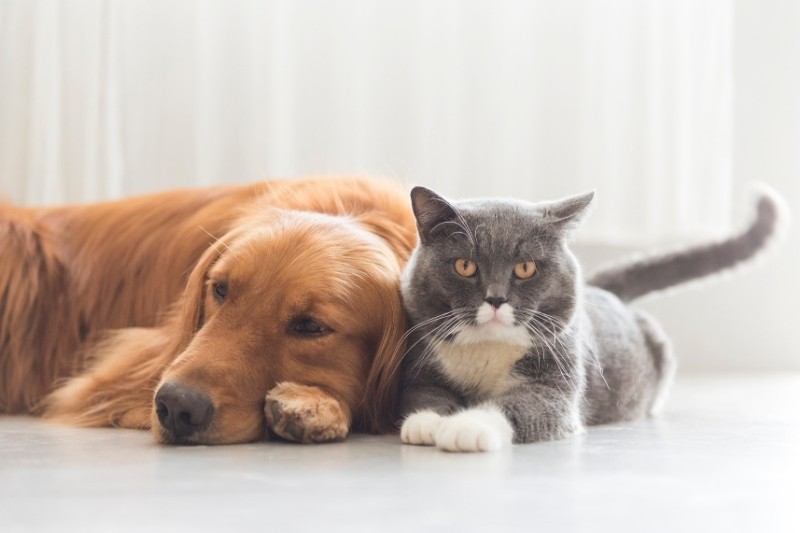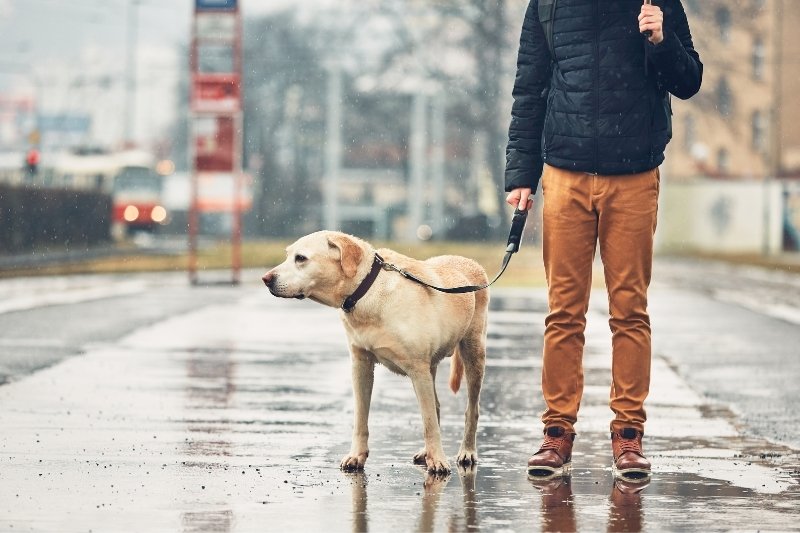How to Pet a Dog? 5 Dos and 5 Don’ts

Petting a dog seems like a simple pleasure, yet doing it right involves understanding and respect for the dog’s needs and preferences.
Whether you're interacting with your own furry friend or a new canine you meet, knowing the proper ways to approach and touch a dog can enhance the bonding experience and ensure safety.
In this article, we'll explore five essential tips for petting a dog correctly, as well as five common mistakes to avoid. These guidelines will help you build positive interactions with dogs, keeping both you and the animals comfortable and happy.
The Do's of Petting Your Dog

1. Approach with Calmness and Respect
When approaching a dog, it's crucial to maintain a calm and relaxed demeanor.
Avoid sudden movements or loud noises that may startle or intimidate the dog. If possible, allow the dog to initiate the interaction by approaching you first.
To start a proper greeting, bow down to their level and offer your hand for them to sniff. Pay attention to their body language to gauge their interest in interacting with you.
2. Observe Body Language
Watch for subtle cues in the dog's body language to determine their comfort level and willingness to be petted.
Look for signs of relaxation and invitation, such as a wagging tail, relaxed muscles, and a soft expression. If the dog initiates contact by sniffing you or leaning towards you, it's likely they are open to being petted.
However, it's essential to respect their boundaries and cues. If the dog appears tense, avoids eye contact, or shows signs of discomfort such as yawning or licking their lips, it's best to give them space and try a different approach to petting.
3. Always Pet in the Right Places
When petting your dog, focus on areas where they typically enjoy being touched.
These include the sides of the neck, chest, under the chin, and shoulders. However, it's essential to remember that every dog is unique, so always observe their reaction to ensure they're truly enjoying it.
Additionally, ears can be a sensitive and pleasurable spot for many dogs, as the area contains numerous nerves. If your dog shows signs of enjoyment, such as leaning into your touch or wagging their tail, feel free to give them a gentle ear rub for added pleasure.
4. Use a Proper Touch
Maintain a gentle touch when petting your dog, avoiding any rough or intense handling. Opt for long and slow strokes, which are easier for the dog to predict and find comforting.
Always pet along the direction of the fur, as this mimics the natural flow and feels more pleasant for your furry friend. Pay attention to your dog's response and adjust your petting technique accordingly. If they seem to be enjoying the interaction, continue with gentle strokes.
However, if they show signs of discomfort or unease, such as tensing up or moving away, it's best to pause and reassess your approach.
5. Respect the Dog's Space
Respecting a dog's personal space is vital for a positive interaction. It's important to allow the dog to disengage if they show signs of discomfort. These signs can include turning their head away, moving away, or showing a general lack of interest in continuing the interaction.
If the dog seems restless or starts to show subtle signs of anxiety such as licking lips, yawning, or lowering their ears, it's time to give them some space.
This not only prevents any potential stress for the dog but also helps in building trust. Dogs who feel their boundaries are respected are more likely to engage positively in future interactions.
The Don'ts of Petting Your Dog

1. Avoid Overstimulation
It's important to recognize signs of overstimulation or anxiety in a dog, as these can lead to discomfort or even aggressive behaviors.
Signs of overstimulation include excessive panting, drooling, pacing, or a focused fixation on a particular object or person. If you notice these behaviors, it's a good idea to give the dog a break.
Allow them some quiet time to calm down, ideally in a familiar and safe environment.
2. Don't Pet Inappropriate Areas
Start by avoiding the top of the head, as many dogs perceive a hand coming directly over their head as a threat. Similarly, it's wise to steer clear of the tail, legs, and face. These areas are particularly sensitive, and dogs are often protective of them.
Be mindful of the dog's personal space, especially around their genitals and anus, areas that should always be avoided to respect their comfort.
Additionally, while some dogs may enjoy being hugged, many do not, particularly if they're not familiar with you. Hugging can make a dog feel confined and unable to escape, which can lead to anxiety or defensive behavior.
3. Never Force Interaction
It's important to understand that just like humans, dogs have personal preferences and comfort levels. Do not pressure a dog into being petted. Always allow them to choose whether to engage or disengage from the interaction.
Respecting a dog's choice is key to building a trusting relationship. If a dog chooses to walk away or shows disinterest in being touched, it's essential to honor that decision.
Pressuring a dog to interact when it shows reluctance can increase stress and potentially provoke an undesirable reaction. Letting the dog have control over its interactions promotes a sense of security and well-being.
4. Don't Ignore Warning Signs
Signals such as growling, lip licking, showing the whites of their eyes, or flattening their ears are important indicators of discomfort or anxiety. These behaviors are the dog's way of communicating that they are not comfortable with the current situation.
Always take cues from the dog's behavior and adjust your approach accordingly. If a dog shows any of these warning signs, it's best to pause and assess the situation.
Give the dog space and avoid further interaction that may escalate into negative behavior.
5. Don't Pet Stranger Dogs Without Asking Permission
It's natural to want to pet a friendly-looking dog you meet in public, but it's crucial to ensure that both the dog and its owner are comfortable with the interaction.
Always ask the owner for permission before approaching or petting their dog. This respect for the owner's consent not only sets a positive tone but also ensures that you're aware of any specific behaviors or sensitivities the dog might have.
Some dogs may not be comfortable with strangers, or the owner may be working on training or behavioral issues.
By asking first, you help maintain a safe and respectful environment for everyone involved.

DogsPlanet.com is one of the main websites for dog owners, future owners and dog lovers. Our team of authors seeks to answer the questions that you frequently ask yourselves.








